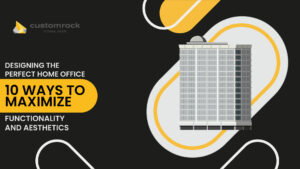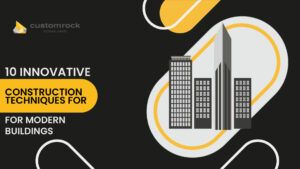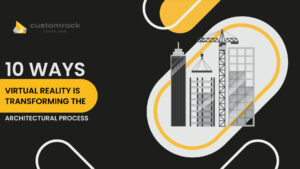TL: DR
Formliners have reshaped and revolutionized the relationship between art and architecture. It has helped in showcasing the dynamics of creativity and functionality. From ancient inspirations to modern innovations, formliners have evolved into powerful tools for construction projects.
It has provided a foundation to interact architectural designs with artistic expressions. This relationship between art and architecture has promoted unique collaborations and explored new possibilities. Artists and architects can now defy conventional norms by building breathtaking structures with the help of formliners.
The integration of these two has resulted in the creation of visually captivating structures. Artists and architects can turn ordinary buildings into aesthetic structures that engage and inspire creativity.
Apart from the aesthetical appeal of formliners, their sustainability is also one of the best features. Eco-friendly design practices are necessary to protect the environment by minimizing the risks associated with architectural techniques.
– Explore formliner pricing and what impacts total cost.
– Learn how to specify formliners correctly for your project.
– Compare single-use vs. multi-use formliners to choose the right fit.
– See DOT formliners designed for transportation and public works projects.
Therefore, architects choose formliners to emphasize responsible construction. It offers a great way to perform sustainable architecture practices.
Formliners have a lasting impact on art and architecture since they last longer and preserve cultural heritage.
As architects continue to adopt the possibilities of formliners, urban landscapes will thrive with the integration of art and architecture.
The bridge between these disciplines remains strong. It enriches the world with beauty, innovation, and sustainable living. Formliners truly bridge the gap and make the future of art and architecture inevitable.
Bridging the Gap: Formliners as Artistic Elements
Formliners have provided a foundation for both art and architecture. Artists and architects come together to push boundaries in architectural creativity. These collaborations result in innovative projects that allow the integration of art and architecture.
Here’s how formliners have contributed to collaborations between art and architects to create stand-out projects:
1. Cross-Disciplinary Expertise
Artists are known for their imaginative vision and expertise in various arts. The art forms vary from sculptures and paintings to digital art. On the other hand, architects are experts in their knowledge of structure.
Their knowledge includes building designs, materials, and structural integrity. The combination of cross-disciplinary expertise results in exceptional results in architectural projects.
2. Breaking Conventions
The new design perspectives and creative ideas challenge conventional architectural methods. Artists introduce unconventional materials, innovative forms, and interesting concepts. This inspires architects to think beyond the usual and inspire impressive designs.
3. Emotion and Storytelling
Artists are known for including emotional and storytelling elements in their work. By adding these elements, the architectural spaces become more than just structures. They start to have a personal and touching aspect to them. This helps people connect with the spaces on a deeper level as it makes them feel comfortable and engaged.
4. Public Art Installations:
Artists and architects work together to create public art installations. They use artistic formliners to transform public spaces, plazas, and urban landscapes. The goal is to make these areas engaging and vibrant. These art installations help foster a sense of community and cultural identity.
Some Buildings That Exemplify the Fusion of Art and Architecture
Many famous buildings worldwide show how art and architecture blend using formliners. These structures inspire future projects and prove art’s power in architecture. A few examples include:
1. Walt Disney Concert Hall (Los Angeles, USA)
The Walt Disney Concert Hall was created by Frank Gehry, and it’s famous for its shiny stainless steel walls. These walls have wavy curves, which resonate with the flows and rhythms of music. The whole building looks like a beautiful sculpture as it blends art and architecture.
2. Guggenheim Museum Bilbao (Bilbao, Spain)
Guggenheim Museum Bilbao museum; which is also designed by Frank Gehry, has a titanium exterior that looks like a piece of art. It shows how modern art and architecture can bring amazing transformation.
3. Milwaukee Art Museum (Milwaukee, USA):
The Santiago Calatrava-designed museum features iconic wings. These wings represent a flying bird. The way the building can move and change shape makes it expressive and intriguing.
These buildings show how artists and architects work together can make incredible landmarks. They inspire awe and admiration and bring art and architecture together.
Future of Formliners in Art and Architecture
As technology continues to advance, the future of formliners in art and architecture looks promising. Emerging trends in formliner technology and design include:
-
Digital Fabrication:
Advancements in 3D printing and Computer-Aided Design (CAD) allow for precise and intricate formliner designs. Architects can now create highly complex and customized patterns with ease. It enabled a new era of artistic expression in architectural facades.
-
Smart Formliners:
Integration of smart materials and sensors into formliners can lead to interactive facades that respond to environmental conditions, user interactions, or dynamic lighting. These formliners will enhance the visual and functional aspects of buildings.
-
Sustainable Materials:
The focus on sustainability extends to formliner materials as well, with the emergence of biodegradable, recyclable, and low-carbon footprint options. Architects can expect an expanded selection of eco-friendly formliners for environmentally conscious projects.
-
Parametric Design:
Parametric design tools enable architects to create generative algorithms. These algorithms generate formliner patterns based on specific design parameters. This approach allows for adaptive and context-sensitive designs that respond to various environmental factors.
The Lasting Impact of Formliners on the Built Environment
Formliners have a huge impact on how buildings look and work. Their lasting impact has redefined architectural aesthetics and functionality. Here are a few impacts of formliners on the built environment:
1. Architectural Landmarks:
When innovative formliners are applied in building design, the buildings become iconic landmarks that people can easily recognize. These buildings stand out in the cityscape, leaving a memorable impression on residents and visitors alike.
2. Aesthetic Diversity:
Formliners help architects make interesting designs, shapes, and textures for buildings. This makes each building special in terms of appearance. Instead of using the same designs all the time, architects can be creative and make buildings that truly stand out. This ultimately makes the city look more pleasing and aesthetic with diverse designs.
3. Sustainable Practices:
Integrating eco-friendly formliners into construction practices helps create environmentally conscious buildings. These sustainable choices reduce the negative impact on the planet and support the movement toward green architecture and responsible construction.
4. Cultural Heritage Preservation:
Artistic formliners allow architects to incorporate traditional art forms, historical patterns, and motifs into contemporary architectural designs. By blending tradition with innovation, buildings can preserve the cultural heritage of the region.
5. Economic Growth:
The use of formliners in designing distinctive and visually appealing structures can draw more tourists and visitors to an area. This increase in tourism can boost local economies, as people are drawn to explore and experience the unique architectural offerings of the region.
6. Community Identity:
Buildings featuring captivating formliner applications can become symbols of local pride and community identity. Visitors develop a strong sense of familiarity with these structures, which helps create a sense of belonging.
7. Inspiring Future Design:
The successful implementation of formliners in one building can inspire future architectural projects. Other architects may be encouraged to think outside the box and experiment with new forms and patterns. Ultimately, pushing the boundaries of design and patterns in the built environment.










